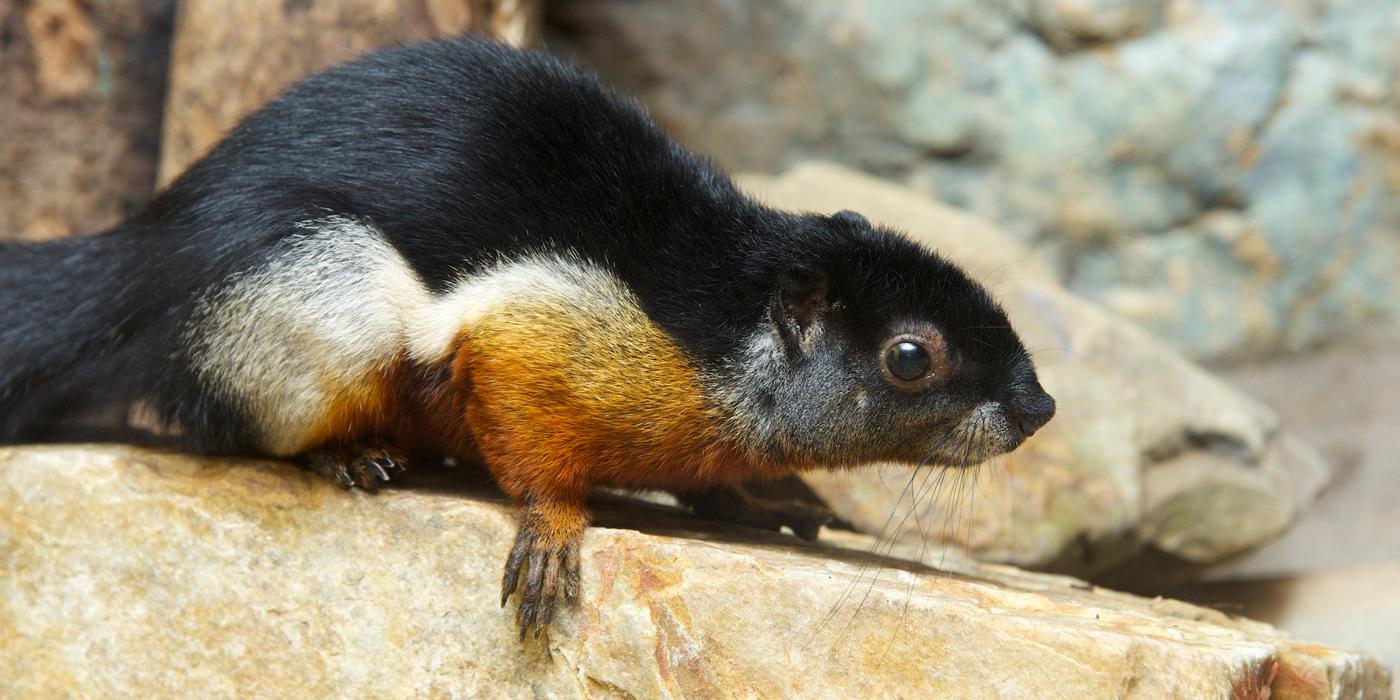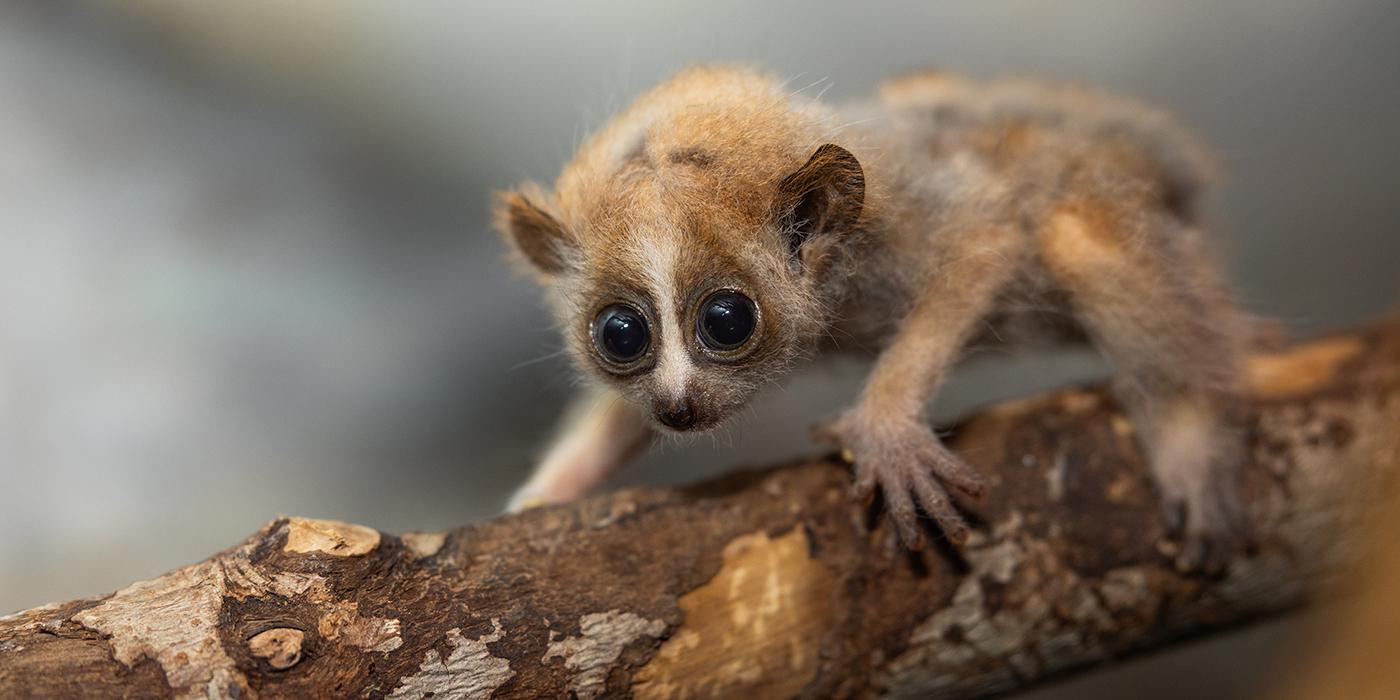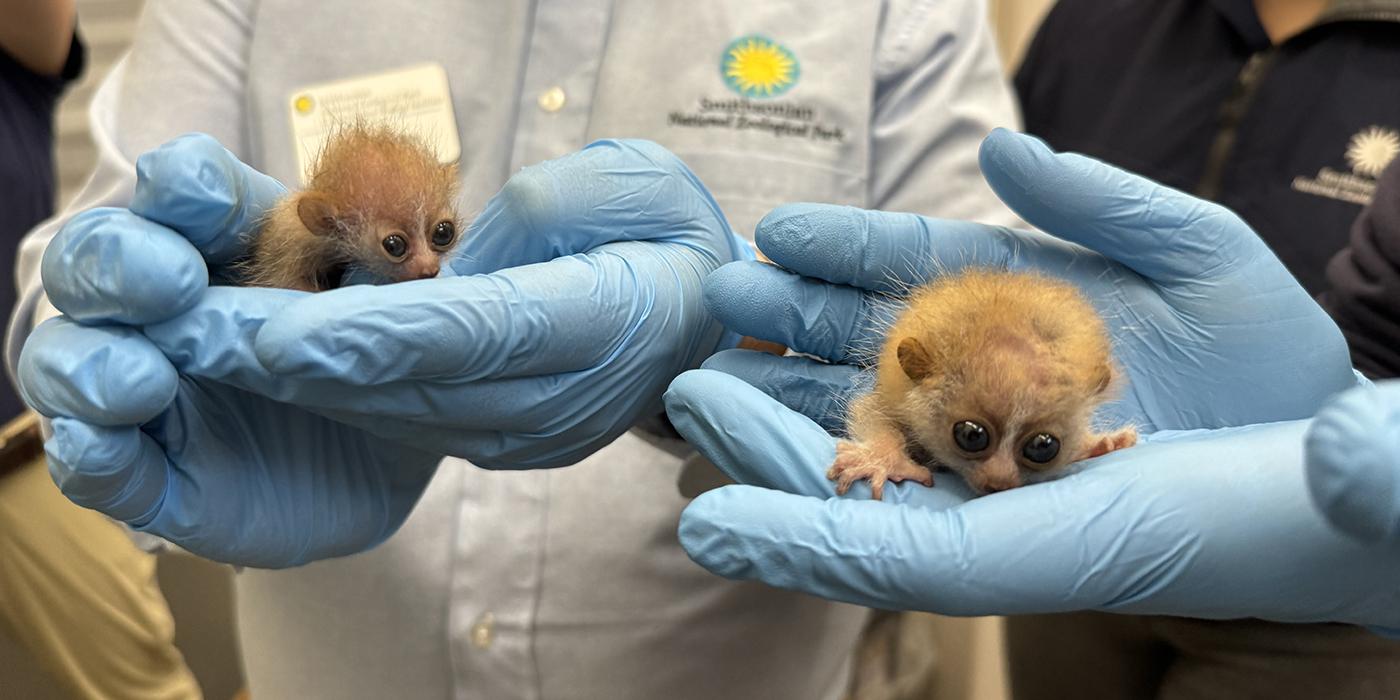Get to Know the Prevost’s Squirrel
There’s one squirrel in Washington, D.C., that you won’t catch scaling your neighbor’s oak tree with a mouthful of acorns. The Prevost’s squirrel is native to Southeast Asia, but visitors to the Smithsonian’s National Zoo can see one at Small Mammal House. In celebration of Squirrel Appreciation Day, here are six facts to get you better acquainted with the Prevost’s squirrel.
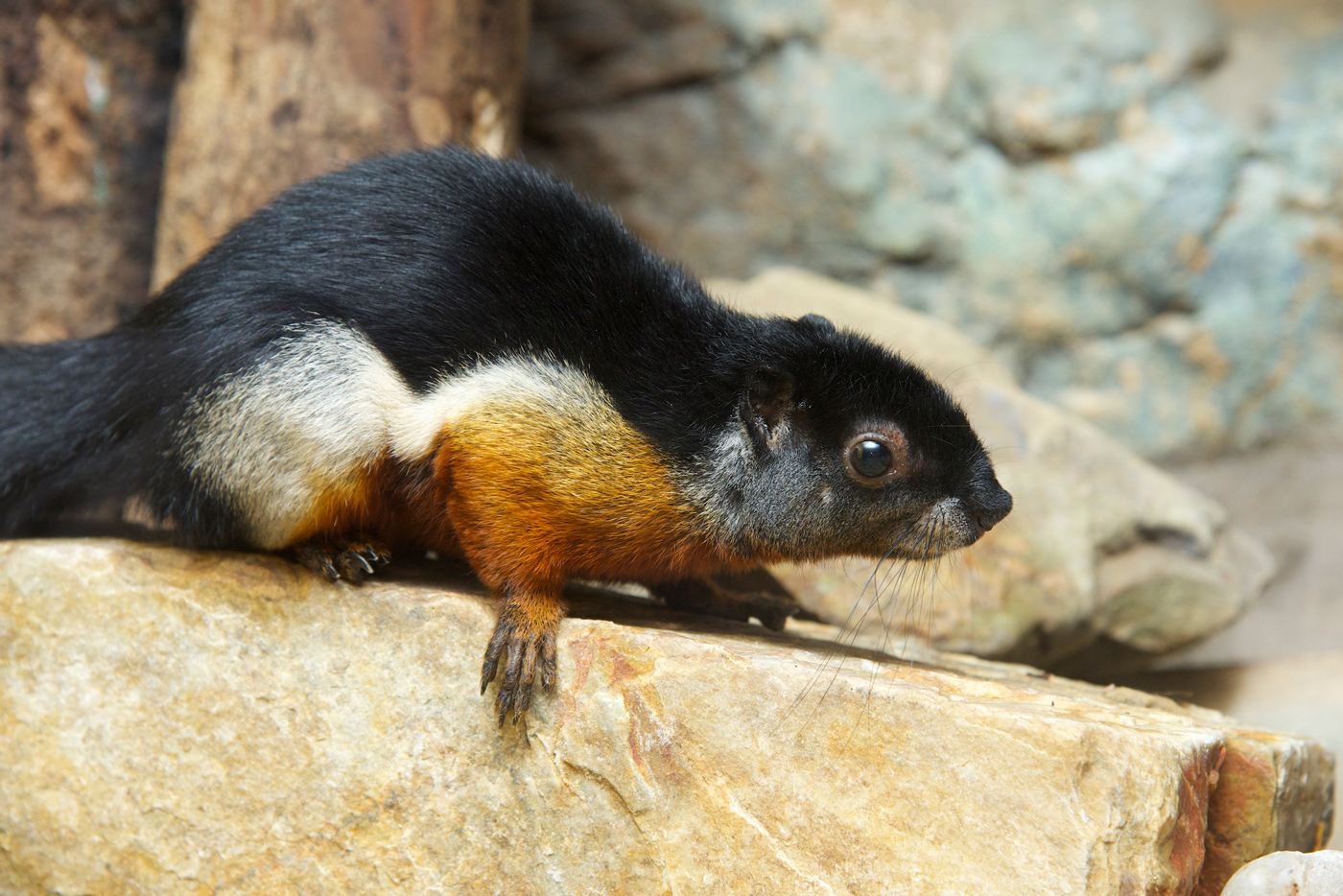
1. They have stunning fur coats.
In a room full of Eastern gray squirrels (the most common in your backyard), the Prevost’s squirrel would be easy to spot. Its fur has three distinct bands of color: jet black, white and reddish-brown.
2. They are born naked, toothless and eyes wide-shut.
Like most tree squirrels, Prevost’s squirrels are pretty helpless at birth. Luckily, it doesn’t take long for them to grow into their own. By 6 weeks old, Prevost’s squirrels are fully furred and independent enough to venture out.
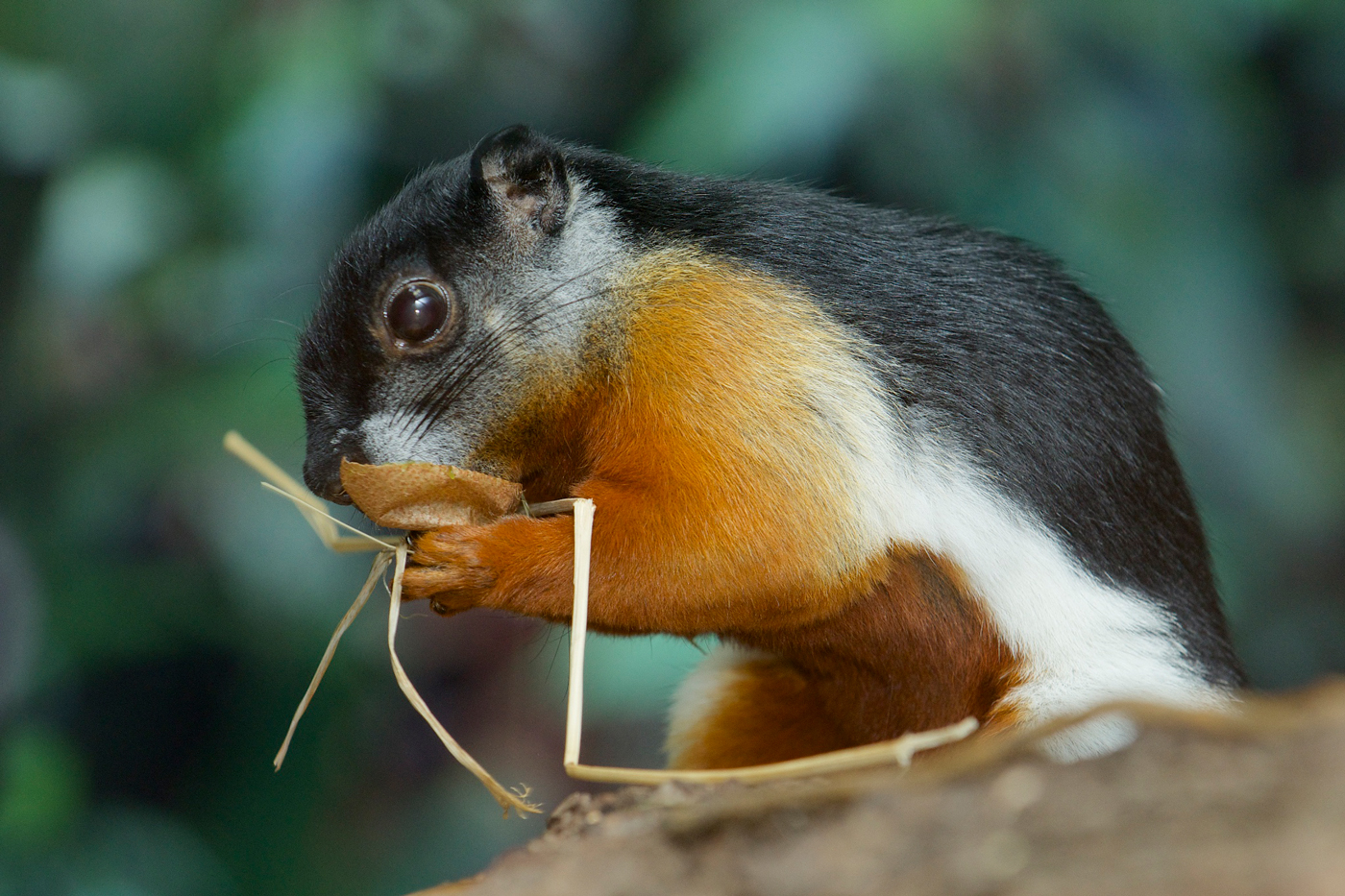
3. They’re crepuscular.
You might be thinking: What on earth is crepuscular? Like nocturnal (out and about at night) and diurnal (awake during the day), crepuscular is a term that describes the time of day when an animal is most active. In this case, it’s scientist-speak for active at dusk and dawn.
4. They live in trees.
This one may seem obvious, but not all squirrels are tree squirrels. The squirrel (or Sciuridae) family also includes ground squirrels, like chipmunks, marmots and groundhogs. Prevost’s squirrels are tree squirrels. They use their sharp-clawed toes to cling to bark as they climb and jump from branch to branch.
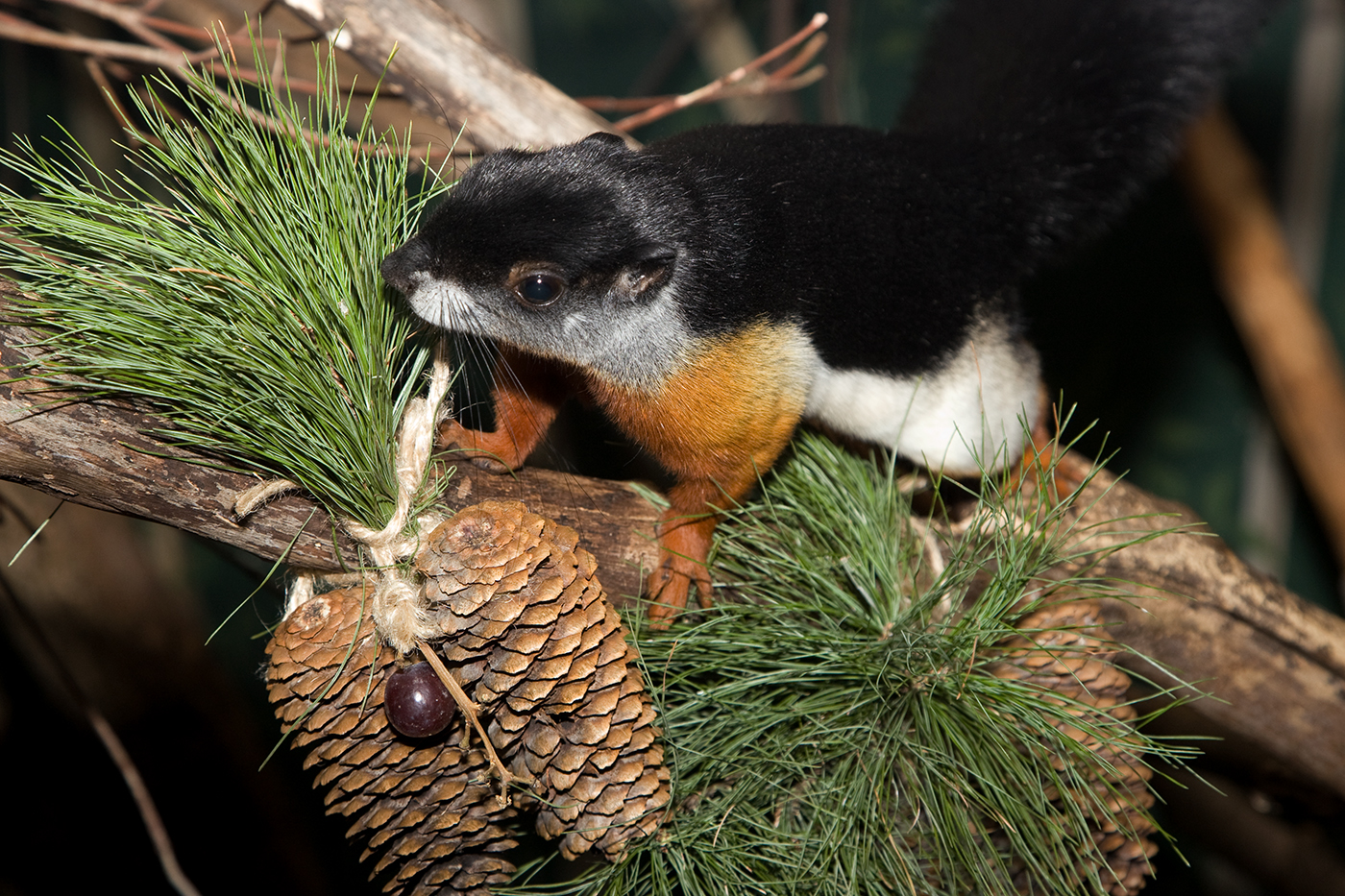
5. They have an ear-piercing whistle.
Prevost’s squirrels trill when they’re upset or excited, and they use loud whistles to locate fellow squirrels or warn them of danger. In fact, they have three different types of alarm calls: one for aerial predators, one for ground predators and one for snakes! They also use their tails like signaling flags to communicate.
6. They build nests.
Have you ever considered where squirrels sleep? Prevost’s squirrels spend their nights resting in tree hollows or on wide branches in nests built of leaves and twigs. They’ll also wrap their bushy tails around their bodies to stay warm.
Stop by Small Mammal House to see a Prevost’s squirrel on your next trip to the Zoo!
Related Species:

